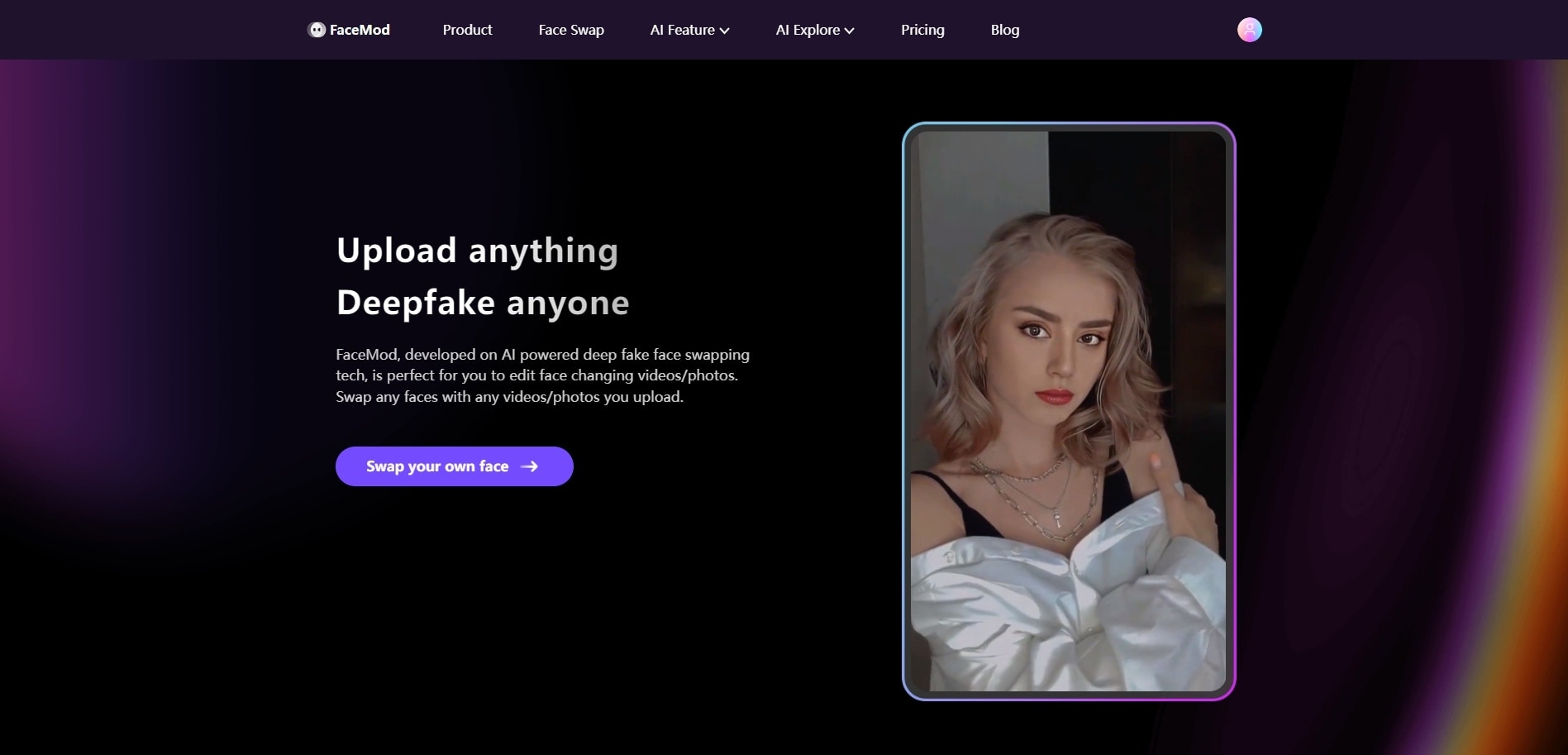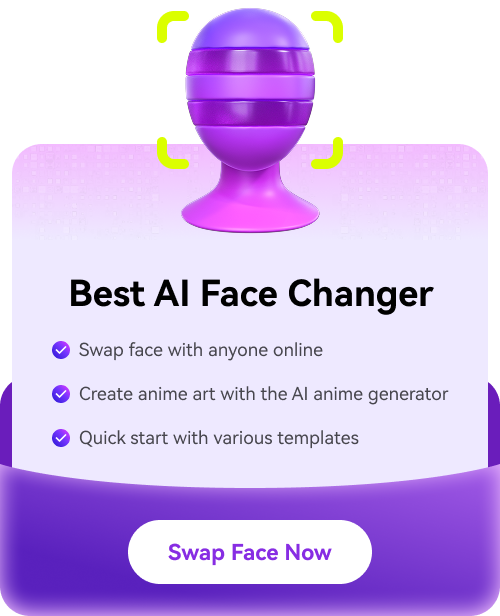Deepfakes is a powerful technology that allows for manipulating visual and audio content. These media creations have gained the attention of people worldwide. Due to the ability to superimpose one person's face onto another's body in videos, you can create convincing results. Nevertheless, with advancement, deepfakes have found many uses across multiple domains.
Moreover, deepfakes have applications in entertainment, social media, research, and cybersecurity. As technology evolves, we can expect further advancements and applications soon. Furthermore, with the availability of different tools, this technology is accessible to everyone. So, stop searching for how to deepfake and use one such tool to create one.
Content:
Part 1: What Do You Know About Deepfakes?
Deepfakes are AI-generated fake media that can change or replace parts of images or videos. Here's what you should know about creating deep fake videos and their in-depth details.
• Deepfakes Definition: Deepfakes use AI algorithms, like deep learning, to make realistic fake media. They combine "deep learning" and "fake" to create the term "deepfake."
• Face Swapping: Furthermore, they are often used to swap faces in photos or videos. The algorithms replace one person's face with another in the original content.
• Training Process: Moreover, its models learn from large datasets. This database includes both the face of the target and the source person. The models generate content that looks like the target person while keeping the structure of the original content.
• Generative Adversarial Networks (GANs): GANs have two networks: a generator and a discriminator. The generator creates fake content, and the discriminator tries to tell if it's real or fake. Yet, the generator improves at creating realistic deepfakes that fool the discriminator.
• Realism and Quality: Deepfakes aim to be very realistic and hard to tell apart from real content. They can replicate facial expressions, skin textures, and lighting. Furthermore, they can even imitate voices to make the fake content seem authentic.
• Potential Applications: Moreover, they have positive uses in different fields. Yet, there are concerns about malicious uses, like spreading misinformation and privacy issues.

Part 2: How to Make the Perfect Deepfake - A Guide
Here is the answer if you are looking for how to make a deepfake video perfectly. This guideline will tell you to make perfect deepfakes in step-by-step guidelines.
Step 1: Collect Training Data
Gather a large dataset of images or videos with the source and target individuals. Moreover, it also includes different poses, expressions, and lighting conditions.
Step 2: Preprocess Data
Clean and prepare the training data by aligning faces. Furthermore, crop images and normalize colors and lighting for consistency.
Step 3: Train the Deepfake Model
After that, use deep learning algorithms, like GANs, to train the deepfake model. Then, optimize the model's parameters to enhance the quality and realism of your creation.
Step 4: Face Alignment and Warping
Furthermore, align and match the facial features and expressions of the source and target individuals. Moreover, it uses facial landmark detection and face-warping techniques to do so.
Step 5: Face Swapping
You can use a trained deepfake model to replace the face of one person with another person's face. Then, generate a new sequence that combines the source content with the target face.
Step 6: Post-Processing
Refine the deepfake's appearance through post-processing techniques. In addition, you can correct color tones and lighting and make other adjustments as well.
Step 7: Evaluation and Iteration
After that, you should assess the quality and realism of the video or image. If necessary, redo the training process. Moreover, you can further adjust parameters or collect more training data to improve the results. Similarly, check for further visual errors and inconsistencies.
Step 8: Responsible Use and Ethical Considerations
Lastly, use this technology responsibly by obtaining consent and following ethical guidelines. Be aware of the potential consequences and avoid non-consensual uses of deepfakes.
Part 3: What Are the Multiple Use Cases of Deepfakes?
Deepfakes have a wide range of uses across different fields. While it's important to use them responsibly, there are many positive applications for deepfakes. Let's explore some of these uses before making deepfakes:
1. Entertainment and Visual Effects
Deepfakes can be used in movies and TV shows to create entertaining content. Moreover, it can create stunning visual effects or bring digital characters to life. Additionally, it is a cost-effective method to change actors into different scenes or characters.
2. Dubbing and Voiceovers
Furthermore, this technology can be used for dubbing or creating deepfake voiceovers. It enables the synchronization of a person's face with a different voice. Moreover, this technology allows localized versions of movies, TV shows, or video content.
3. Historical and Cultural Preservation
Moreover, deepfakes can recreate historical figures, events, or cultural artifacts. While using deepfakes, you can bring the past to life with realistic visuals. Furthermore, it can improve our educational experiences and help preserve cultural heritage.
4. Accessibility and Inclusion
In addition, it can make content more accessible for individuals with disabilities. For example, a deepfake could allow a deaf person to lip-read a person speaking in sign language. Disabled people will watch such deepfake content. Furthermore, it makes the content more inclusive and engaging.
5. Training and Simulation
Deepfakes can be used in training simulations for different fields. For instance, it can be helpful in healthcare, defense, and emergency response. Furthermore, face-swapped simulations provide better training experiences without real-world risks.
6. Personalized Content and Advertising
This technology offers the potential for personalized content and advertising experiences. Advertisers can integrate personalized messages or celebrities into ads. Moreover, it can make more engaging and relevant ads for specific audiences.
7. Art and Digital Expression
Creating deepfake videos provides professionals with a medium for exploring new forms of digital expression. They can use them for visual storytelling or to add creativity. Furthermore, it pushes creativity by blurring the lines between reality and imagination.
8. Virtual Influencers and Brand Ambassadors
Lastly, deepfakes can create virtual influencers or brand ambassadors. These AI-generated characters can engage with audiences in a unique and creative way. Besides this, it helps to promote products or services and create unique brand experiences.

Part 4: FaceHub: An Exceptional Platform for Creating Deepfakes Online
Deepfake technology merges with creativity to bring exciting possibilities. Moreover, deepfakes have gained significant attention for their utility in different fields. Additionally, the utility ranges from entertainment to research. And when it comes to creating deepfakes, FaceHub is here to help you. It is an online tool with face-swapping capabilities.
FaceHub is a powerful tool that allows you to explore the potential of deepfakes. You can create high-quality photos and videos with its interface and advanced algorithms. Furthermore, you can create swapped face GIFs, images, and videos with FaceHub. This tool helps you in making deepfakes choosing videos or images.

Key Features of FaceHub AI Face Swapping
1. FaceHub enables you to swap multiple faces in a single photo or video. With its batch edit feature, you can change multiple faces simultaneously.
2. Moreover, it offers video editing capabilities, allowing you to modify media files easily. Additionally, you can swap genders in your media files.
3. Furthermore, FaceHub does not impose annoying advertisements or watermarks on your creations. With this feature, you can focus on the creative process without distractions.
Conclusion
Deepfakes have become a prominent technology in these years. It allows audiences to manipulate visual and audio content. Moreover, deepfakes have found diverse applications across various fields. As technology advances, we can get more realistic and accurate deepfake results. However, with many tools and applications, creating deepfakes is easier than ever.




